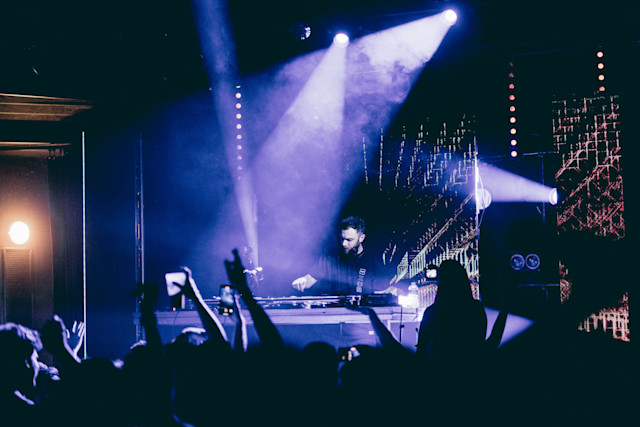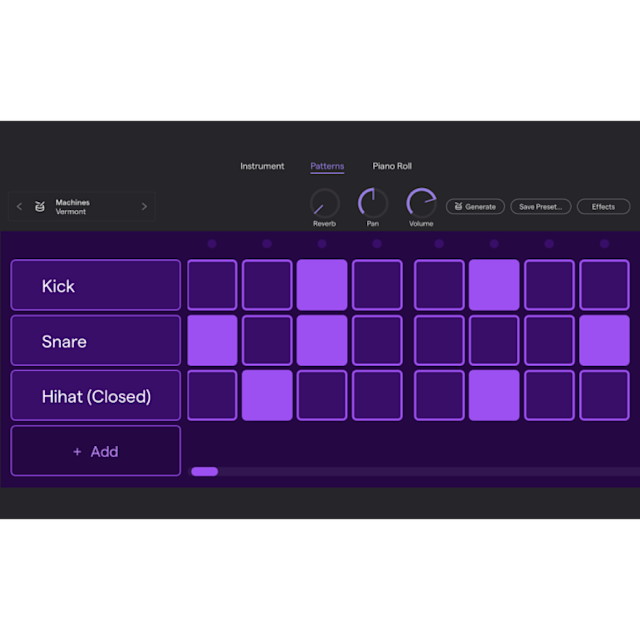How To Make Dubstep Beats for Beginners
June 17, 2024 - Unpack the bass & breakbeats! Learn the secrets of crafting killer dubstep: wobbles, drums & more in this ultimate beat-making guide.

Dark overtones, wobbling basslines, and intense drops. Dubstep was the electronic marmite of the millennial generation, enjoying obscene levels of exposure and popularity at the turn of the last decade.
Love it or hate it, there was a time when dubstep was everywhere. Its rise was astronomical- in under a decade dubstep artists transitioned from only being heard on UK pirate radio stations, to headlining major festivals worldwide.
Many artists have since moved away from the more aggressive, Brostep-inspired sound pioneered by American producers such as Skrillex, but the genre remains influential and Dubstep artists continue to enjoy success nearly 15 years after the genre’s apex of mainstream popularity.
Let’s take a deep dive into the anatomy of Dubstep, and see how you can recreate the hard-hitting, brooding sound that defined electronic music in the late noughties and early 2010s.
What is Dubstep?
Dubstep’s roots lie in the more experimental releases of South London’s Garage producers, who were looking for a way to incorporate drum and bass elements into the 2 step garage sound. The themes were often dark, conveyed through heavy use of minor keys and dissonant harmonies.
At the turn of the 2000s, there was a growing sense of urban paranoia as digital recording allowed vast numbers of CCTV cameras to be rolled out across London and major cities in the UK. The threatening nature of the wobbling sub bass and unsettling harmonies reflected this paranoia, and Dubstep became popular with clubbers and bloggers alike.
As the London Dubstep music scene took shape, artists like Skream, Burial and Benga started to be championed by UK tastemakers, leading to a rapid crossover into mainstream radio airplay.
By the end of the 2000s, Dubstep had been ingratiated with pop music, and a genre that was once largely instrumental was now being commercialised with the addition of vocals from artists like Britney Spears, Snoop Dogg and Rihanna.
However the intense polarisation associated with dubstep really kicked off in the early 2010s, as producers such as Skrillex, Flux Pavillion, and Doctor P, took what was once a more subdued sound, and transmuted it into a far more aggressive iteration of the genre.
The initial focus on sub-bass frequencies was moved, and the mid-range, trebly synths following incredibly dramatic drops became the defining feature of what would be pejoratively called ‘Brostep.’
This less introspective version of Dubstep would fare far better commercially in the United States, and ultimately would become the sound that most people associate with the term ‘Dubstep’ today.
How To Make Dubstep
If you want to produce Dubstep and make Dubstep beats, you need to be comfortable with getting your hands (and basslines) dirty. Mastering things such as FM synthesis, modulation and sidechain compression can go a long way, but when you’re just getting started this can all seem daunting. Ultimately it’s about demystifying things that often sound more complicated than they are!
Dubstep Beats
When it comes to creating the perfect Dubstep drum beat, you don’t necessarily need to spend hours crafting something, as the half-time rhythms associated with Dubstep tend to be fairly simple and straightforward.
Have your kick drum on the first downbeat and your snare on the third to get this half-time sound, but then introduce variation through percussion and hi-hats.
Hats alternating on and off-beat can be very effective, as well as quantizing some of the hats to swing. Toms and other percussive elements filling those gaps can also help.
A technique used by Skrillex is crafting your own drum kit through manipulation of samples. He will often layer multiple kicks and then compress them to make the transients sharper and to help them cut through. Compression or using some gated reverb to give artificial space can also help beef up a snare sample, which drives the half-time rhythm.
When you’re working with a genre that has to keep certain elements simple to retain its identity, introducing variation and keeping things interesting can be challenging. However it’s important to strike a balance between conforming to stylistic norms and keeping listeners engaged.
One of my favourite drum kits for creating modern Dubstep in Soundtrap is the Dubstepper kit. The transients are piercing and bring a lot of power to the table, and the kit is really nicely saturated which removes the need for any additional distortion plugins.
Set your tempo between 140 and 150 bpm, and make sure your snare comes in every third beat. This will provide a great starting off point for your track, and will allow you to build the drums around the snare.
Dubstep Bass
When it comes down to Dubstep bass, often you have to know what direction you want to go in stylistically. Remember the major changes between the classic UK Dubstep and the later variations?
The more prominent wobbling bass in the former was replaced with a focus on the more midrange synths, however they did not vanish entirely. Reese basses are a key element of modern Dubstep, and they can be modulated to be more aggressive or more laid-back depending on your preference.
One absolutely crucial element however, is creating a relationship between the kick and the bass. Sidechain compression will allow the sub-bass to quickly lower in volume as the kick sample is heard, before quickly returning again as the kick sample ends. This creates that pumping sound heard in most EDM, and it’s an essential part of producing Dubstep.
Using Soundtrap’s Instant Sidechain, you can seamlessly place a sidechain compressor on your sub and create that symbiotic relationship between kick and bass. A sidechain compressor will give that radio-ready sound, and add more dynamics and kineticism to your track, which is a huge part of modern Dubstep. The infrequent appearance of kick samples in your typical Dubstep track (compared to other adjacent genres) means your sub can still take centre stage providing you have effective control of your sidechain compressor.

Drops, Sound Design, Dubstep Samples
It’s a good idea to keep your drops interesting and varied- copying and pasting drops and repeating the same patterns will mean you’re found out relatively quickly. Try and change how each drop builds and lands- one of my favourite synths when crafting a drop on Soundtrap is the Dubstep Growler, which creates these fat, layered synth lines perfect for modern Dubstep. Some of the samples are rhythmic as well and can easily be incorporated into your typical half time beat.
When it comes to creating your own unique style, sound design is a really important aspect of the production process. It gives your track additional flare and thought, and means your work will sound less generic than if you’d just used presets.
Modulation is one aspect of sound design which is really important to master if you’re creating Dubstep, as phasey, wide synths are a key part of the sound in both modern and classic Dubstep. Reverb and Delay will provide you with space, while distortion of your synths and other elements will give the aggression and power you might be looking for if you want a modern sound.
Dubstep samples are another great way to provide a unique feeling to your track, whilst also providing a sense of familiarity to the listener if they have heard the sample before. They can speed up your workflow massively, and allow you to test out ideas which you can later fine tune through sound design if you’d like.
Soundtrap’s loops and samples are easily modified and completely royalty free, so if you’d like to add a jazzy saxophone or a surreal vocal sample to your tracks, you’ll be completely covered and not at risk of any legal action!
Mixing and Mastering
Perhaps most crucially, it’s really important to get your mix and master right if you are creating Dubstep, and electronic music in general. Whereas some live music and more traditional artists can get away with rough mixes and still be listenable, a poorly mixed Dubstep track will not cut it. If people can’t hear the sub or kick, then the track is essentially unlistenable in a DJ set.
When mixing, in the forefront of your mind needs to be the context in which the song is most likely to be heard- a muddy mix on massive speakers is in nobody’s interest. Brush up on your mixing skills before releasing your track, or if you’re worried you’re not there yet, feel free to get in touch with a professional who has experience mixing Dubstep.
Conclusion
Though polarising, the importance of Dubstep as a defining genre in the history of electronic music cannot be understated. Its remarkable ascent from underground UK white label releases to being a household name in less than 10 years demonstrates the effect it has on people.
While in its early days classic dubstep was heady and dissociative, its transition into the dynamic, social sound that now defines most modern dubstep was crucial to the success of the genre globally. With the right tools, creating Dubstep is accessible for anyone with spare time and a passion for bass music.
About the author
Max McLellan is a composer, songwriter, and audio engineer with credits ranging across film, TV and radio. He provides composition, mixing, and mastering services through his company MKM Audio.
Get started with Soundtrap today!